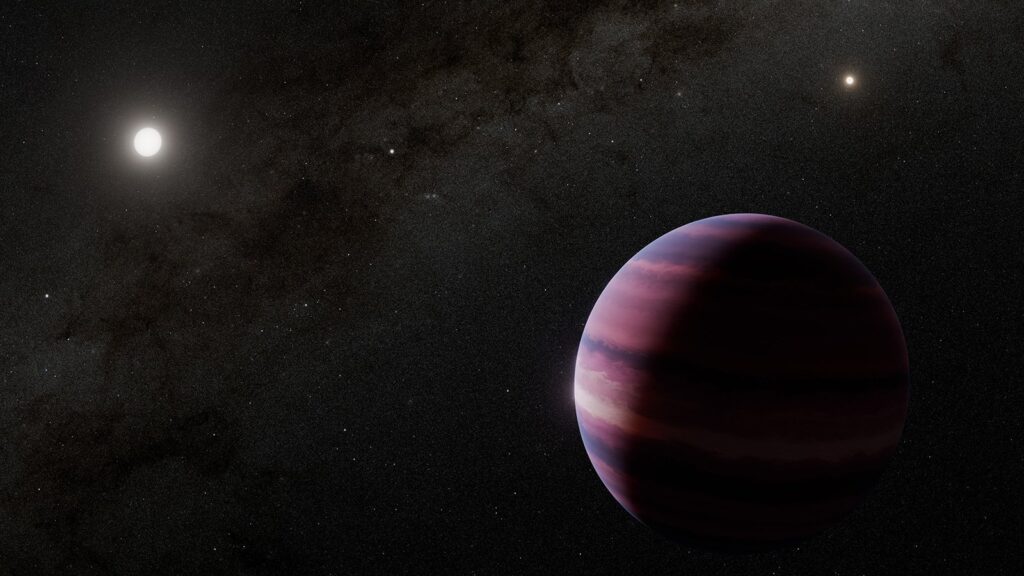
Astronomers utilizing NASA’s James Webb Space Telescope have uncovered compelling evidence of a potential planet orbiting a star in the Alpha Centauri system, the closest stellar system to our Sun. Located just 4 light-years from Earth, this discovery marks a significant milestone in the search for exoplanets, or worlds beyond our solar system.
The Alpha Centauri system consists of a pair of Sun-like stars, Alpha Centauri A and Alpha Centauri B, alongside the faint red dwarf star Proxima Centauri. While three planets have been confirmed orbiting Proxima Centauri, confirming the presence of other planets around Alpha Centauri A and B has proven elusive—until now.
Breakthrough Observations with the James Webb Space Telescope
Recent observations using the Mid-Infrared Instrument (MIRI) on the James Webb Space Telescope have provided the strongest evidence yet of a gas giant planet within the habitable zone of Alpha Centauri A. This zone is the region around a star where conditions could support liquid water on a planet’s surface, a crucial factor for habitability.
If confirmed, this planet would be the closest known exoplanet orbiting in the habitable zone of a Sun-like star. However, as a gas giant, it is unlikely to support life as we know it. The findings are detailed in two papers accepted for publication in The Astrophysical Journal Letters, co-authored by Aniket Sanghi, a graduate student at Caltech, and Charles Beichman, executive director of the NASA Exoplanet Science Institute at Caltech’s IPAC astronomy center.
“With this system being so close to us, any exoplanets found would offer our best opportunity to collect data on planetary systems other than our own,” Beichman explained. “Yet, these are incredibly challenging observations to make, even with the world’s most powerful space telescope.”
Challenges and Techniques in Exoplanet Detection
The initial observations were conducted in August 2024 using a coronagraphic mask aboard MIRI. This device blocks the bright glare of a star, allowing astronomers to directly image much fainter planets orbiting nearby. The proximity of Alpha Centauri A’s companion star, Alpha Centauri B, complicates these observations, as its glare can obscure potential planetary signatures.
Despite these challenges, the team successfully subtracted the light from both stars, revealing a candidate planet more than 10,000 times fainter than Alpha Centauri A. This candidate, if confirmed, would be the closest planet to its host star ever imaged, with a separation of two astronomical units, or twice the distance between the Earth and the Sun.
Implications for Exoplanet Research
Based on its brightness in mid-infrared observations, the candidate planet is estimated to be a gas giant with a mass similar to Saturn, orbiting Alpha Centauri A in an elliptical path. This orbit traverses most of the star’s habitable zone, suggesting that smaller rocky planets might struggle to survive in such an environment.
“The elliptical orbit of the candidate giant planet sweeps through most of Alpha Centauri A’s habitable zone, making it unlikely that smaller rocky planets could survive,” Beichman noted.
Follow-up observations with the Webb telescope did not detect the planet, likely due to its proximity to the star during those observations. Future missions, including NASA’s upcoming Nancy Grace Roman Space Telescope, set to launch by May 2027, are expected to provide further insights into this intriguing candidate.
Future Prospects and Scientific Significance
If confirmed, this potential planet in the Alpha Centauri A system would represent a significant achievement in exoplanet imaging. It would be the closest directly imaged planet to its star and the most similar in temperature and age to the giant planets in our solar system.
“Its very existence in a system of two closely separated stars would challenge our understanding of how planets form, survive, and evolve in chaotic environments,” Sanghi stated.
This research, funded by the US National Science Foundation and NASA, underscores the potential of the James Webb Space Telescope to revolutionize our understanding of planetary systems beyond our own. As astronomers continue to refine their techniques and technology, the discovery of new worlds just beyond our cosmic doorstep seems increasingly within reach.





